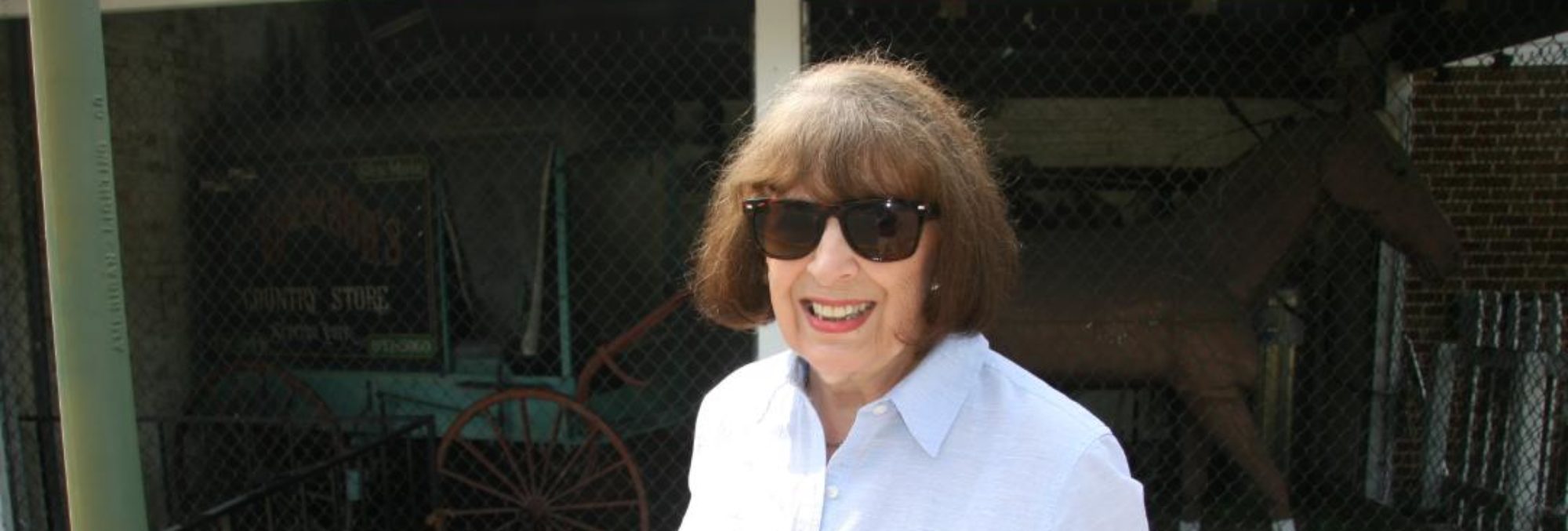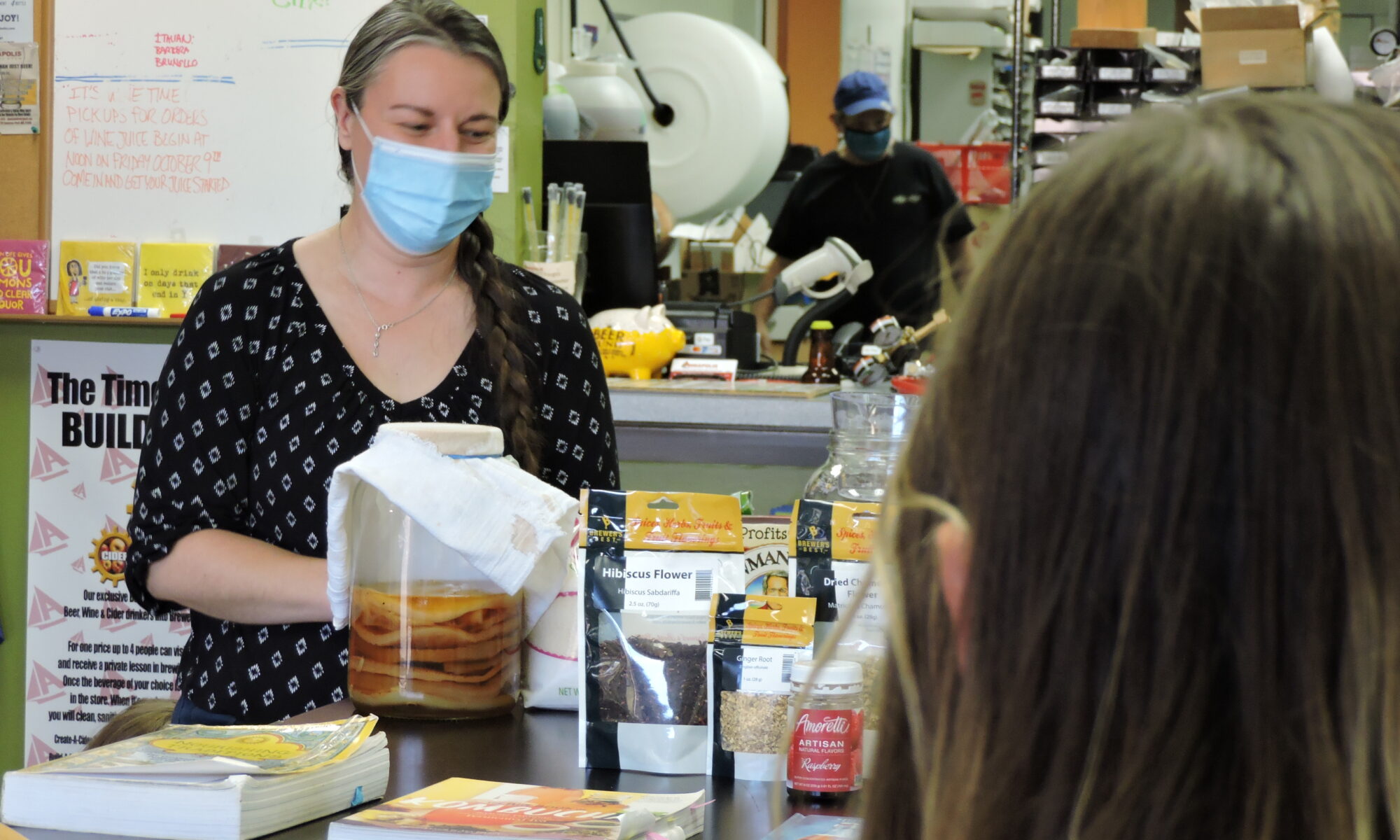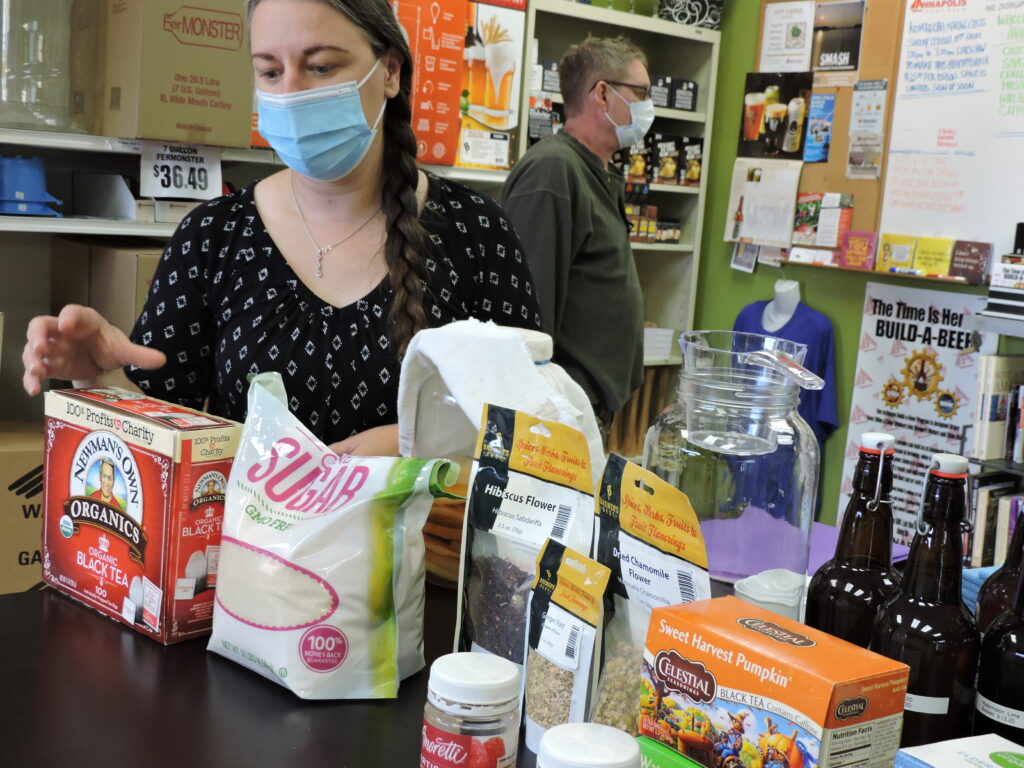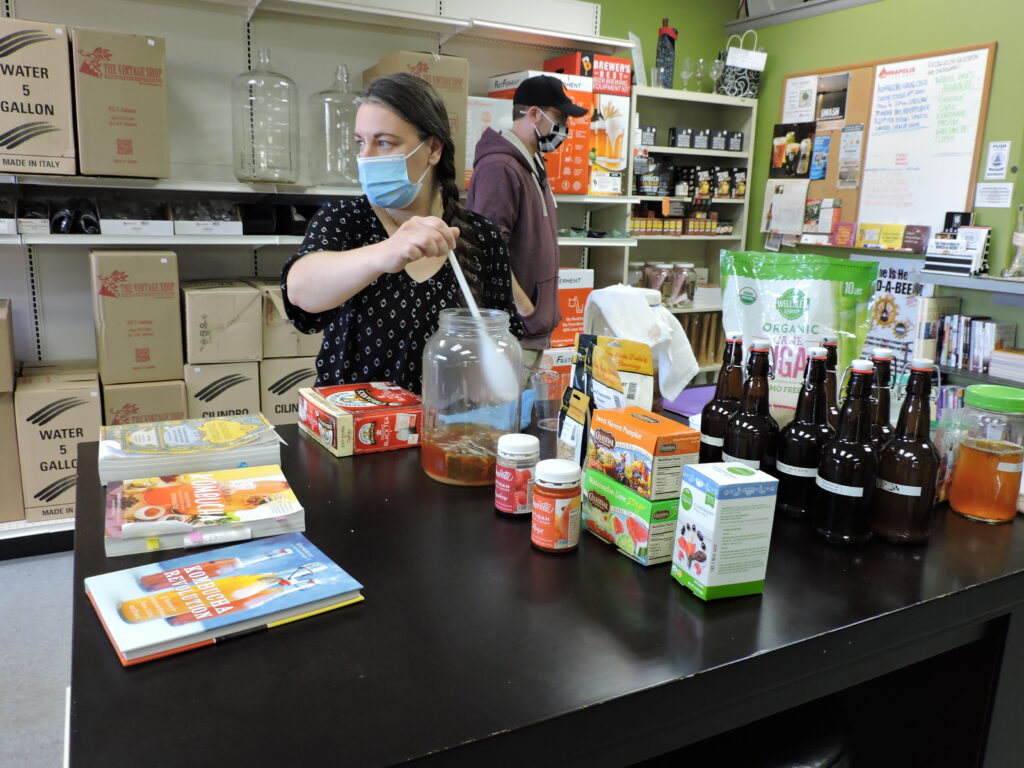AROUND THE PARK AGAIN by Sharon Lee Tegler
From the moment Julia Wills began her class in Annapolis Home Brew’s tasting room, participants’ eyes were drawn to a jar full of floating pancake-shaped living organisms called SCOBY’s that are essential for making the fermented beverage known as Kombucha.
Wills, the owner of Gambrills-based Joyful Days Wellness Spa and a licensed esthetician, is dedicated to nourishing people’s bodies, minds and souls in natural ways. An advocate for making naturally fermented foods and beverages like Kombucha, she initially sought out Annapolis Home Brew – a major supplier of home brewing ingredients and equipment – to purchase glass containers, bottles and other necessities.
She quickly became friends with the owners who sampled her beverages, appreciated her expertise in the art of making Kombucha and suggested she teach a Kombucha class. She’s held the classes once a month ever since.
Speaking from behind an ingredient-laden table, Wills made introductions and extended a special welcome to the class’ oldest participant, John “Jiggs” McHale who happened to have been her junior high vice-principal.
The teacher touched briefly on her background. Having studied nutrition since 2006, she’d learned about the health benefits of naturally fermented foods including Kombucha and had been drinking the beverage for years.
“Back then, Kombucha wasn’t as widely known,” she said. “Only one brand was available locally and I could only find it at one store. Outrageously priced at $4 per bottle, I couldn’t afford it as a young single mom and decided to learn how to make it at home.”

She found a recipe for it in a best-selling cookbook called “Nourishing Traditions” by nutritional expert and author Sally Fallon – a book that both she and McHale consider “their bible”.
Once she’d bought her supplies, she found making a gallon of Kombucha cost her less than $1.
Wills revealed the interesting history of Kombucha and the bacterial culture from which it is made. No one knows exactly how or when it originated but it’s believed to have been used in China as early as 221 BC before spreading around the world. Then as now, the ingredients were very basic.
Wills started her demonstration by combining organic black tea, organic sugar, and boiling water. (It’s perfectly fine to use organic tea bags.) She added 5 tea bags to a small amount of water in a large glass jar she referred to as a fermentation vessel. After stirring the tea, she briefly left the room to fetch additional boiling water.
Photos by Sharon Lee Tegler
During the break, McHale chatted with his tablemates, Erin and Amanda O’Connor, sharing anecdotes and tips. He told them he prepares fermented foods from recipes in Fallon’s book and enjoys making his own sauerkraut from cabbages he grows.
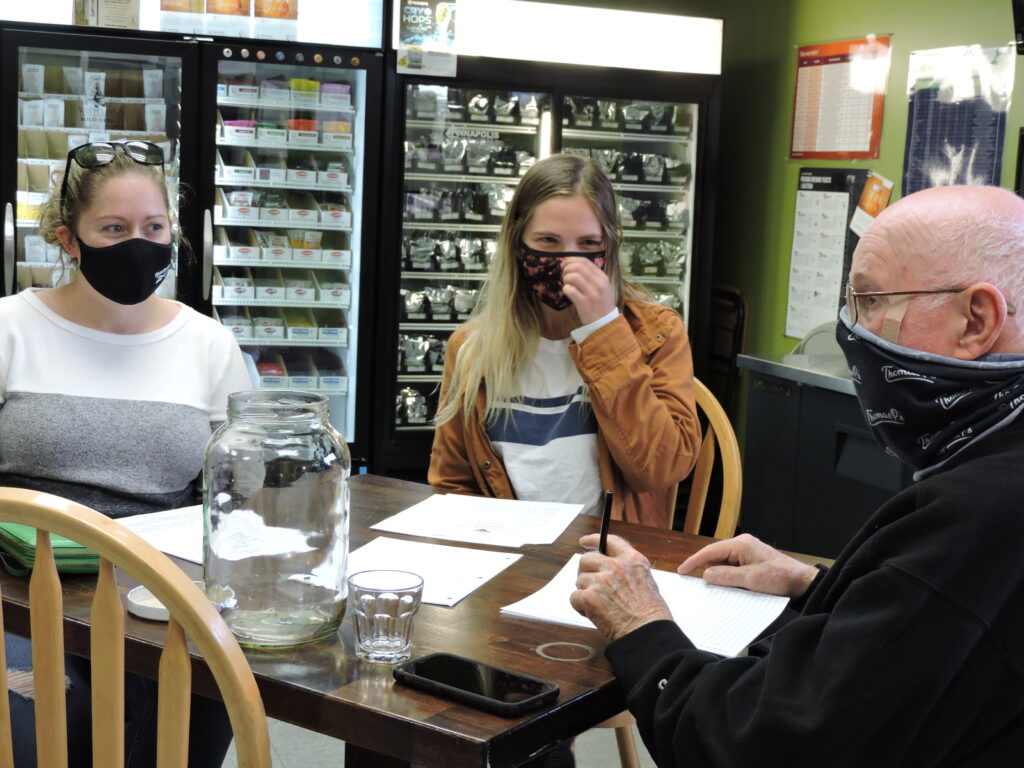
Returning, Wills added a cup of sugar, a cup of pre-made Kombucha, and more boiling water to the vessel. She then introduced the class to the mysterious SCOBY’s in the huge jar. The letters S C O B Y stand for “symbiotic colony of beneficial bacteria and yeast”. Using tongs, she removed one gelatinous SCOBY disc to place atop the brewed tea.
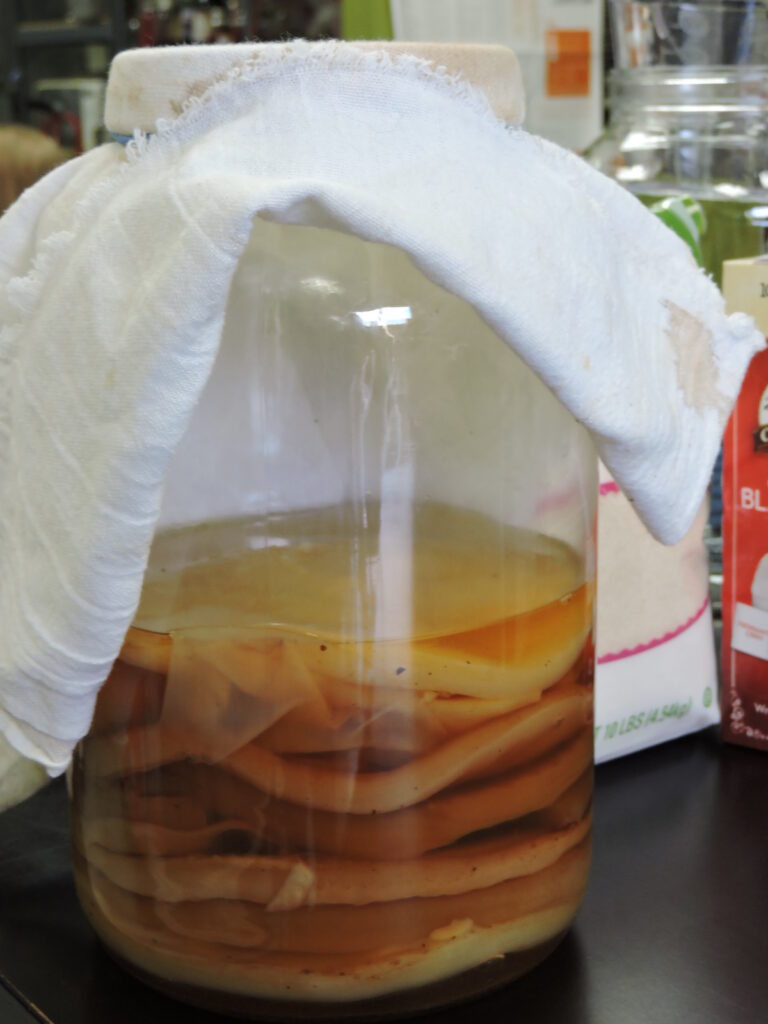
Placing the SCOBY on top of the liquid, Wills covered the vessel with a breathable cloth and sealed it with a rubber band. Transferred to a warm, dark place, the mixture will take 7 to 14 days to culture and will produce a second SCOBY pancake that will float to the top.
“The SCOBY’s interaction with tea and sugar during fermentation produces the proteins gluconic acid and glucaronic acid which cleanse and detoxify the liver, neutralize free radicals, fight inflammation, reduce cholesterol, and protect against petrochemicals found in plastic,” Wills said.
“Fermentation produces numerous probiotics and digestive enzymes as well as energy boosting B vitamins. Properties generated by fermentation also are healing to the pancreas where insulin is made. Both glucosamine, which reduces arthritis joint pain and swelling, and theo-phyllin, which acts as a bronco dilator for asthmatics, are produced.”
The fun part of class began when Wills explained the bottling process during which finished Kombucha brews can be flavored and brought out samples for tasting.
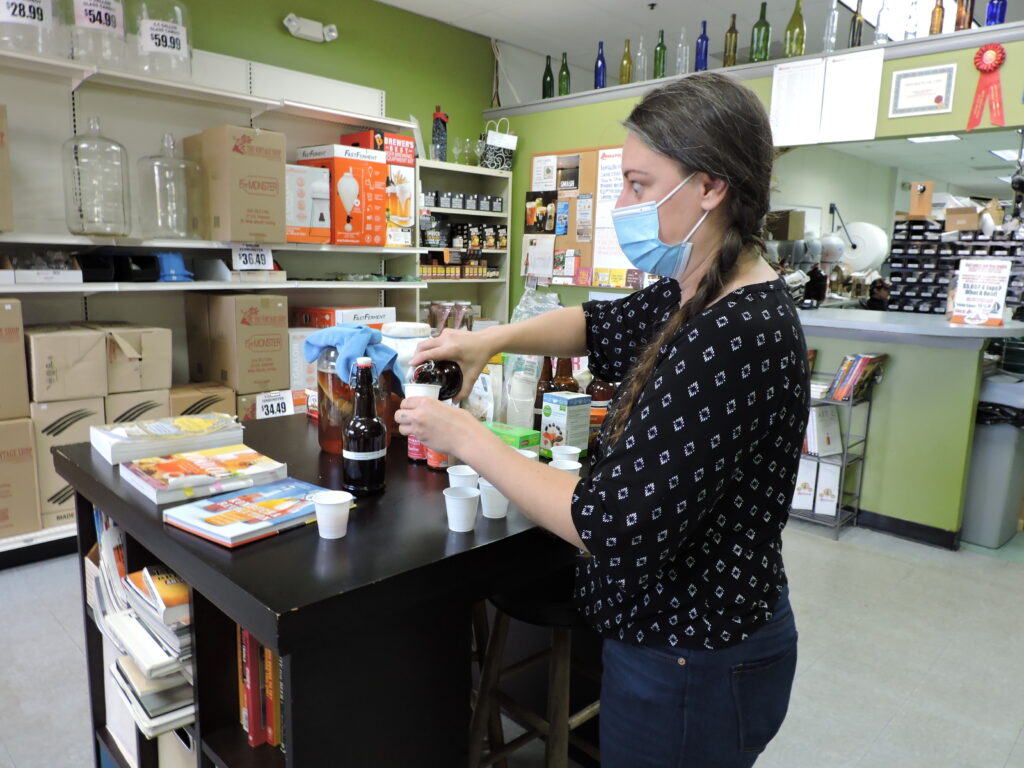
She started with samples from a two week old batch that tasted somewhat sweet and fizzy with a bit of a kick. Samples from a slightly more mature batch, with more of the sugar converted, had a pleasant sweet/sour tang and even more fizz. A third sample – one to which pumpkin spice was added during the bottling process – was voted a big success. One attendee said she preferred it to pumpkin spice coffee.
Fruity watermelon and elderberry-Hibiscus flavored samples were followed by samples of “Jun” – a variety of Kombucha made from green tea and honey requiring a specific kind of SCOBY. All tasted good.
Attendees were next handed recipe print-outs and invited to make their own Kombucha under supervision with their own supplies or by purchasing Joyful Days’ handy fermentation kits which include a SCOBY.
The next Julia Wills’ Kombucha class will be held at Annapolis Home Brew off Ritchie Highway in Severna Park on Sunday, November 25 from 1 to 3 pm. For a schedule of her subsequent classes, visit https://annapolishomebrew.com/ .
